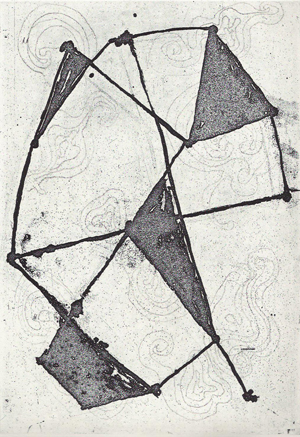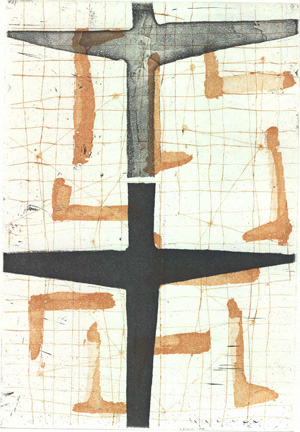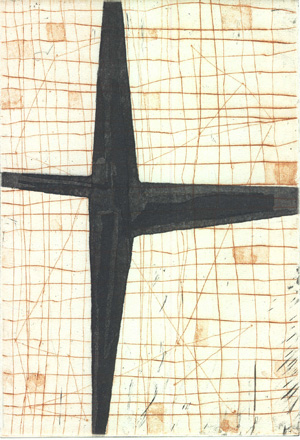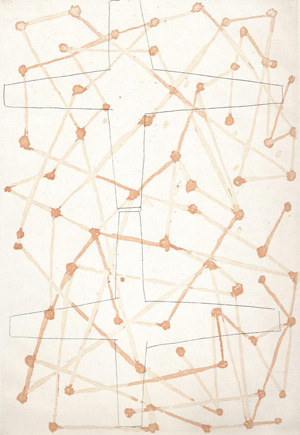|
|
||||||
| N L | Philippe Vandenberg, etching for Exil de Peintre, Ergo Pers, 2003
|
|||||
Exil de peintre, an artists' book with 64 etchings and a text by Flemish artist Philippe Vandenberg. For a year, Philippe Vandenberg worked on this series of etchings in the studio of master printer Henrie Hemelsoet. The contact with the graphic technique gave a new direction to Vandenberg's work. Where the artist uses destruction as a method in his painting, also in etching the 'failure' is often an opening to a new visual language. In the extended biting of the etching h-ground, a new line emerges. The etching technique, the artist's book as a laboratory.
|
||||||
|
 |
Philippe Vandenberg, etching for Exil de Peintre, Ergo Pers, 2003 [printer's proof with soft ground etching and
|
||||
|
|
|||||
|
Etching 34 consists of the combination of two etching plates, the first a vernis mou or soft ground etching, the second an open bite etching with spit bite aquatint, printed in two colour variations.
|
|||||
|
|
|||||
|
|
 |
 |
|||
|
|
 |
||||
|
||||||
|
||||||
|
|
|||||
|
||||||